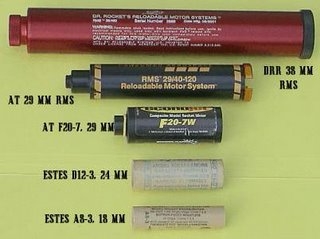
Most people with an interest in space, flight, or aeronautics have built models of planes and rockets in the past. Model rocketry is a very popular hobby among children as well as adults. A simple model rocket is usually comprised of a hollow tube, a rounded aerodynamic head, and stabilizer fins. A small cartridge makes up the engine, which is inserted into the tube. An electrical impulse or a lit fuse serves to ignite the rocket. Most rockets are reusable, but the engines, which are most commonly made with simple black powder, are not. This can be a source of moderate expense to the rocketry enthusiast. Also, many custom built model rockets are not of the appropriate size to accept commercially produced black powder rocket engines. For these reasons here is a guide on how to safely build your own black powder rocket engine.
Begin by cutting a length of cardboard tubing. It should be no more than one quarter of the length of the rocket. Wrap one end of the tubing tightly with some newspaper and tape it into place; this will create a temporary plug, so it should be blocking off one end of the tube entirely.
Drop a small wad of bentonite clay into the tube, and press it down against the plug using the dowel. Keep adding clay until you’ve got a layer several millimeters thick. The exact thickness depends on the size of the tube; the larger the tube, the thicker the layer.
Pour out some black powder onto a newspaper. Most commercially sold black powder is used for flintlock rifles and can be found in most gun stores. You must be over 18 to purchase it though, the same age as you need to be to purchase rocket engines in any store. It will come in rough grains and must be ground down to a finer powder. Press your thumb against the inward curve of the spoon and work it slowly over the powder. Remember never to use any sudden or sharp movements when working with powder to avoid any possible sparks. When the powder is finely ground make an envelope out of another piece of newspaper and funnel the powder into the tube, a few teaspoons at a time. Between each teaspoon use the dowel and mallet to tamp the powder down as tightly as possible. If any air is left within the engine when it is ignited it will explode, so you must be sure to pack the powder down very well.
Place another wad of bentonite clay into the tube when it is almost full. Pack it down against the powder well, using enough clay to cover the entire top of the tube.
Remove the paper wrapping around the bottom of the tube. Inside the tube you should see a perfectly round, smooth clay cap. Insert a needle or pin into the center of the cap, all the way to the powder. Wiggle the pin around in a circle to widen the hole until it’s 2 or 3 millimeters in diameter. This will be the hole into which a fuse or electric lead will be connected when the engine is to be ignited. Leave the engine overnight to allow the clay caps time to harden before you use it.